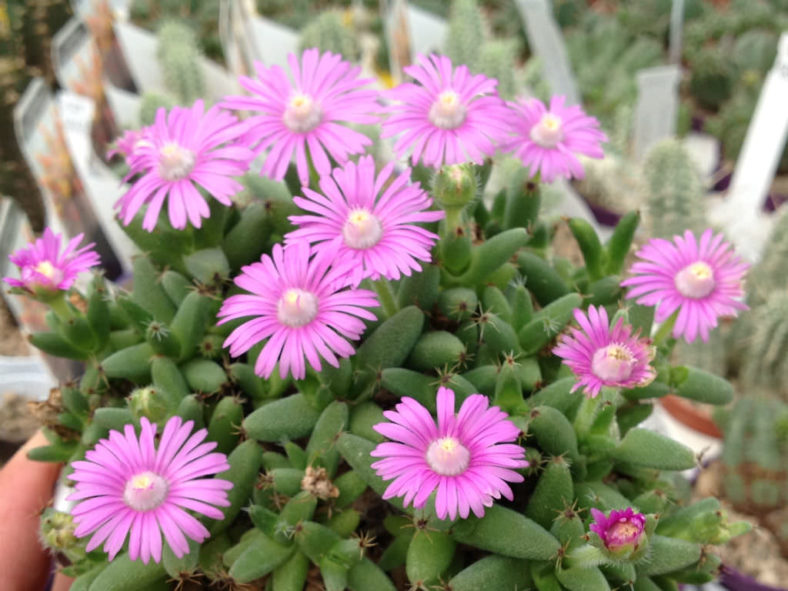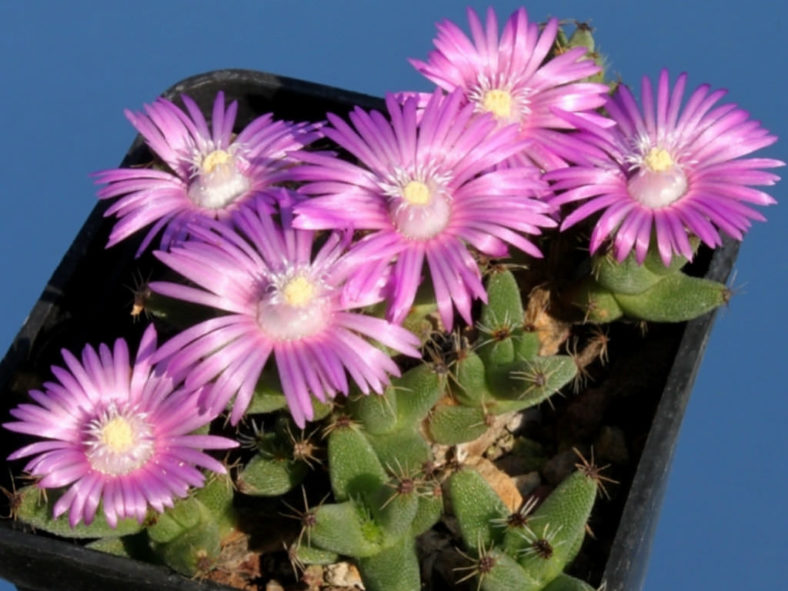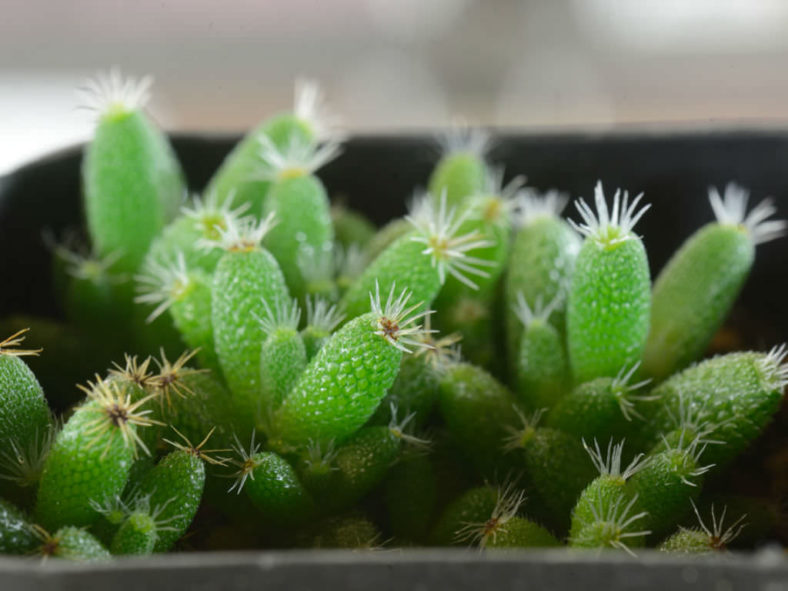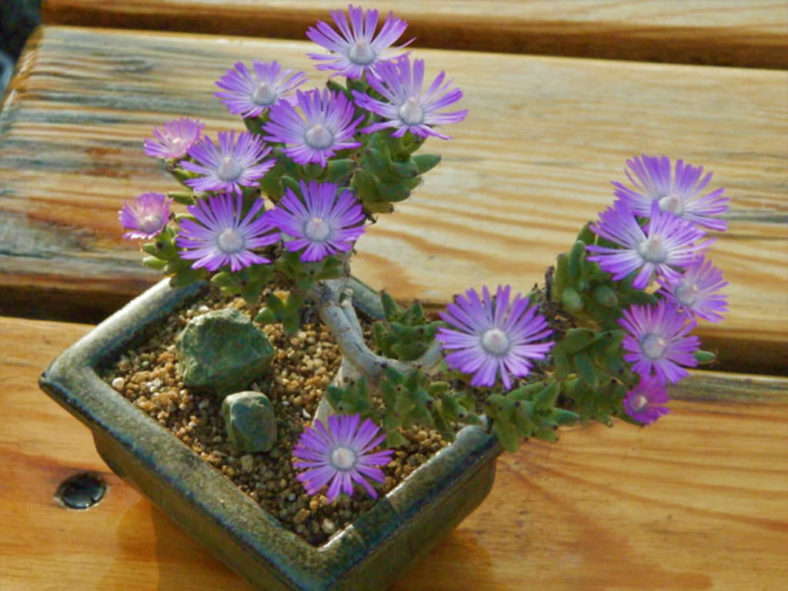Scientific Name
Trichodiadema marlothii L. Bolus
Scientific Classification
Family: Aizoaceae
Genus: Trichodiadema
Etymology
The specific epithet "marlothii" (pronounced "mar-LOTH-ee-eye") honors Rudolf Marloth (1855-1931), a German-born South African botanist, pharmacist, and analytical chemist, best known for his work "The Flora of South Africa," published in six volumes over nearly 20 years.
Origin
Trichodiadema marlothii is native to South Africa. It occurs around Swellendam in the Western Cape province.
Description
Trichodiadema marlothii is a succulent shrublet with woody branches covered with cylindrical leaves with an apical diadem of brownish-white bristles. It can grow up to 1.6 inches (4 cm) tall, with branches racing up to 4.8 inches (12 cm) in length. The leaves are ascending, blue-green with a brownish tip, and can measure up to 0.7 inches (1.7 cm) in length and 0.25 inches (0.6 cm) in diameter.
From spring to fall, Trichodiadema marlothii produces pink, daisy-like flowers that can reach a diameter of up to 1.4 inches (3.5 cm). The fruits are 6-locular capsules.

How to Grow and Care for Trichodiadema marlothii
Hardiness: USDA hardiness zones 9b to 10b: from 25°F (-3.primarilyto 40°F (4.4°C).
Mesembs are mostly adapted to relatively predictable rainfall patterns rather than extreme drought and irregular rainfall. Total rainfall may be extremely low, but water is available at least seasonally or through fog and condensation. This leads to or allows plants that are not especially large and sometimes very small, and affects the way they need to be treated in cultivation.
The care basics are simple: free-draining soil, plenty of sun and ventilation, and regular light watering in the right season. Yet the difficulties are endless, trying to adapt to the Mesembs' adaptability and follow their growth habits in your particular conditions.
These plants require a loam-based compost with extra drainage material such as horticultural grit or perlite. They all like good light conditions and plenty of ventilation.
Some are relatively cold-hardy and can even survive mild winters outside. Most will survive temperatures down to the freezing point. Some Mesembs begin to grow in the fall as the temperature drops and the days get shorter.
See more at How to Grow and Care for Mesembs.
Links
- Back to genus Trichodiadema
- Succupedia: Browse succulents by Scientific Name, Common Name, Genus, Family, USDA Hardiness Zone, Origin, or cacti by Genus
Photo Gallery
Click on a photo to see a larger version.


